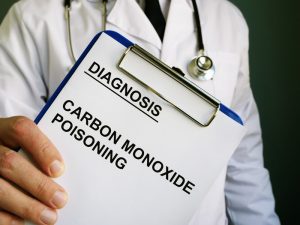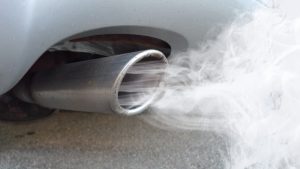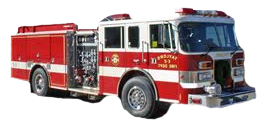Other Safety – Carbon Monoxide – Winter Safety
Carbon monoxide dangers go up as temperatures go down
The Centers for Disease Control and Prevention (CDC) reports that more than 400 people die each year, in the US, from unintentional CO poisoning from different products and motor vehicles.
Carbon monoxide is an invisible, odorless, colorless gas created when fuels (such as gasoline, wood, coal, natural gas, propane, oil, and methane) burn incompletely. When the gas builds up in enclosed spaces, people or animals who breathe it can be poisoned. Ventilation does not guarantee safety. High levels of CO can be fatal, causing death within minutes. A person can be poisoned by a small amount of CO over a longer period of time or by a large amount of CO over a shorter amount of time
Never ignore a CO alarm when it sounds. Get outside immediately, and call 911 from a fresh-air location. The emergency responders and fire department will provide information for safe home re-entry. If you live in an area without access to 911, call your fire department.
 What are the symptoms of CO poisoning?
What are the symptoms of CO poisoning?
Because CO is odorless, colorless, and otherwise undetectable to the human senses, people may not know that they are being exposed. The initial symptoms of low to moderate CO poisoning are similar to the flu (but without the fever). The most common symptoms of CO poisoning are headache, dizziness, weakness, upset stomach, vomiting, chest pain, and confusion. If you breathe in a lot of CO it can make you pass out or kill you. People who are sleeping or drunk can die from CO poisoning before they have symptoms. If you suspect CO poisoning please head seek medical assistance right away.
Who is at risk from CO poisoning?
Everyone is at risk for CO poisoning. Infants, the elderly, people with chronic heart disease, anemia, or breathing problems are more likely to get sick from CO. Each year, more than 400 Americans die from unintentional CO poisoning not linked to fires, more than 20,000 visits the emergency room, and more than 4,000 are hospitalized.
What are some things around your home that could produce CO?
- Faulty fuel-burning appliances such as furnaces, ranges, water heaters, and room heaters
- Cars
- Engine-powered tools like generators
- Burning charcoal in fireplaces or in barbeque grills inside
How can I prevent CO poisoning in my home?
- Install a battery-operated or battery back-up CO detector in your home and check or replace the battery when you change the time on your clocks each spring and fall. Place your detector where it will wake you up if it alarms, such as outside your bedroom. Consider buying a detector with a digital readout. This detector can tell you the highest level of CO concentration in your home in addition to alarming. Replace your CO detector every five years.
- Have your heating system, water heater, and any other gas, oil, or coal-burning appliances serviced by a qualified technician every year.
- Do not use portable flameless chemical heaters indoors.
- If you smell an odor from your gas refrigerator have an expert service it. An odor from your gas refrigerator can mean it could be leaking CO.
- When you buy gas equipment, buy only equipment carrying the seal of a national testing agency, such as Underwriters’ Laboratories.
- Make sure your gas appliances are vented properly. Horizontal vent pipes for appliances, such as a water heater, should go up slightly as they go toward outdoors, as shown below. This prevents CO from leaking if the joints or pipes aren’t fitted tightly.
- Have your chimney checked or cleaned every year. Chimneys can be blocked by debris. This can cause CO to build up inside your home or cabin.
- Never patch a vent pipe with tape, gum, or something else. This kind of patch can make CO build up in your home, cabin, or camper.
- Never use a gas range or oven for heating. Using a gas range or oven for heating can cause a build-up of CO inside your home, cabin, or camper.
- Never burn charcoal indoors. Burning charcoal – red, gray, black, or white – gives off CO.
- Never use a portable gas camp stove indoors. Using a gas camp stove indoors can cause CO to build up inside your home, cabin, or camper.
- Never use a generator inside your home, basement, or garage or less than 20 feet from any window, door, or vent.
- When using a generator, use a battery-powered or battery backup CO detector in your home.
- Clear all things from dryer, furnace, stove, and fireplace vents.
How can I avoid CO poisoning from my car or truck?

- Have a mechanic check the exhaust system of your car or truck every year. A small leak in the exhaust system can lead to a build-up of CO inside the car.
- Never run your car or truck inside a garage that is attached to a house even with the garage door open. Always open the door to a detached garage to let in fresh air when you run a car or truck inside.
- Some homes pull the exhaust from a running car or truck into the home from your driveway or even your neighbors. Always have good CO Monitors!
- If you drive a car or SUV with a tailgate when you open the tailgate open the vents or windows to make sure air is moving through. If only the tailgate is open CO from the exhaust will be pulled into the car or SUV.
Know the symptoms of CO poisoning
Because CO is odorless, colorless, and otherwise undetectable to the human senses, people may not know that they are being exposed. The initial symptoms of low to moderate CO poisoning are similar to the flu (but without the fever). They include:
- Headache
- Fatigue
- Shortness of breath
- Nausea
- Dizziness
High-level CO poisoning results in progressively more severe symptoms, including:
- Mental confusion
- Vomiting
- Loss of muscular coordination
- Loss of consciousness
- Ultimately death
Carbon Monoxide Safety Printable PDF
CO Safety Talking Points Printable PDF




